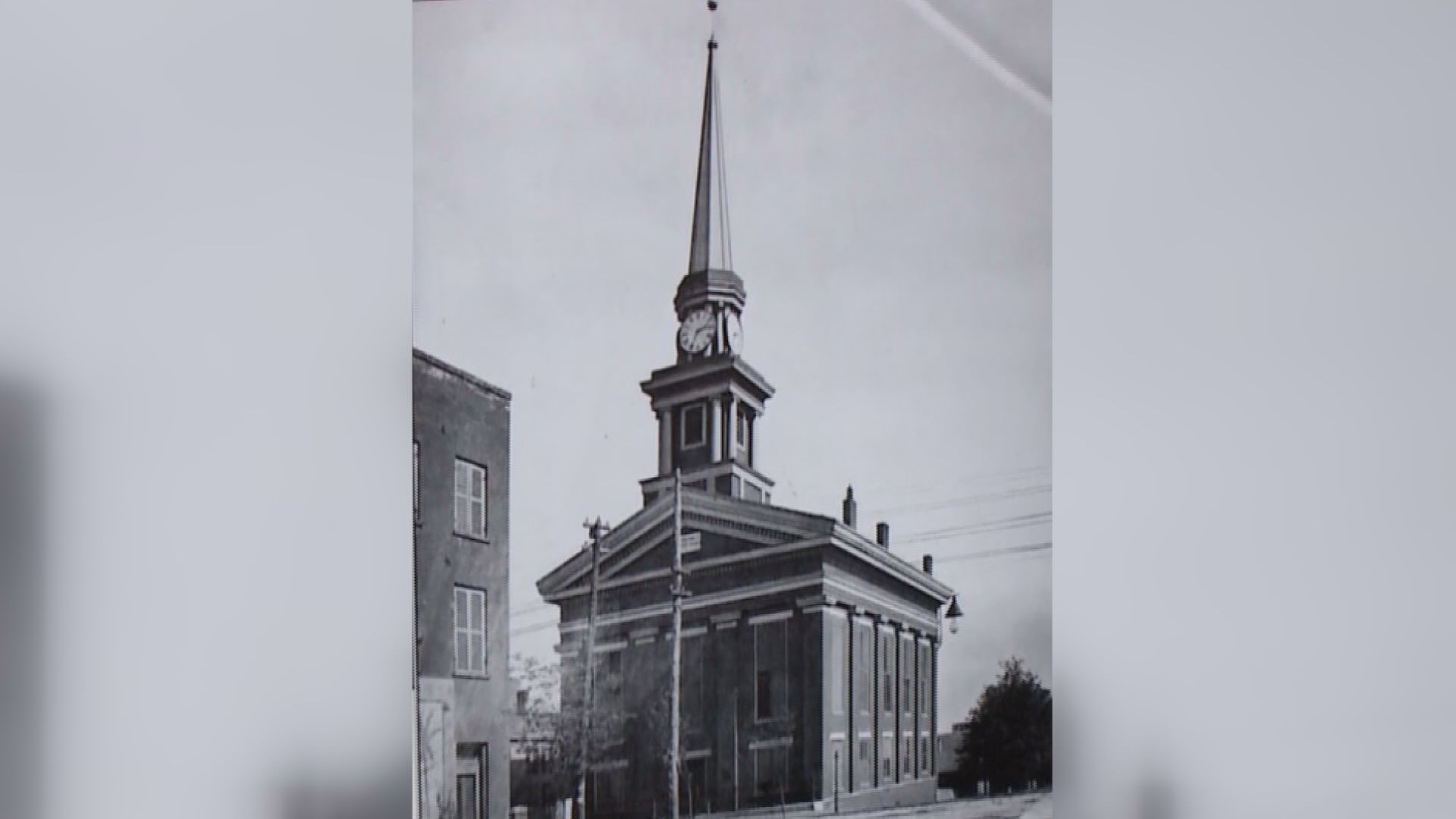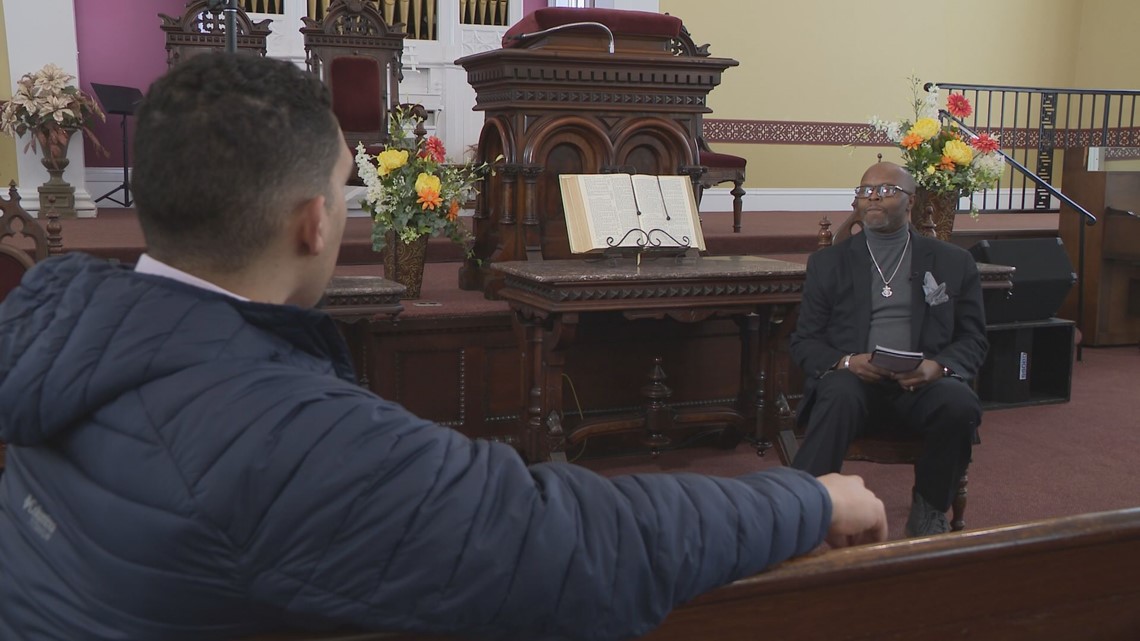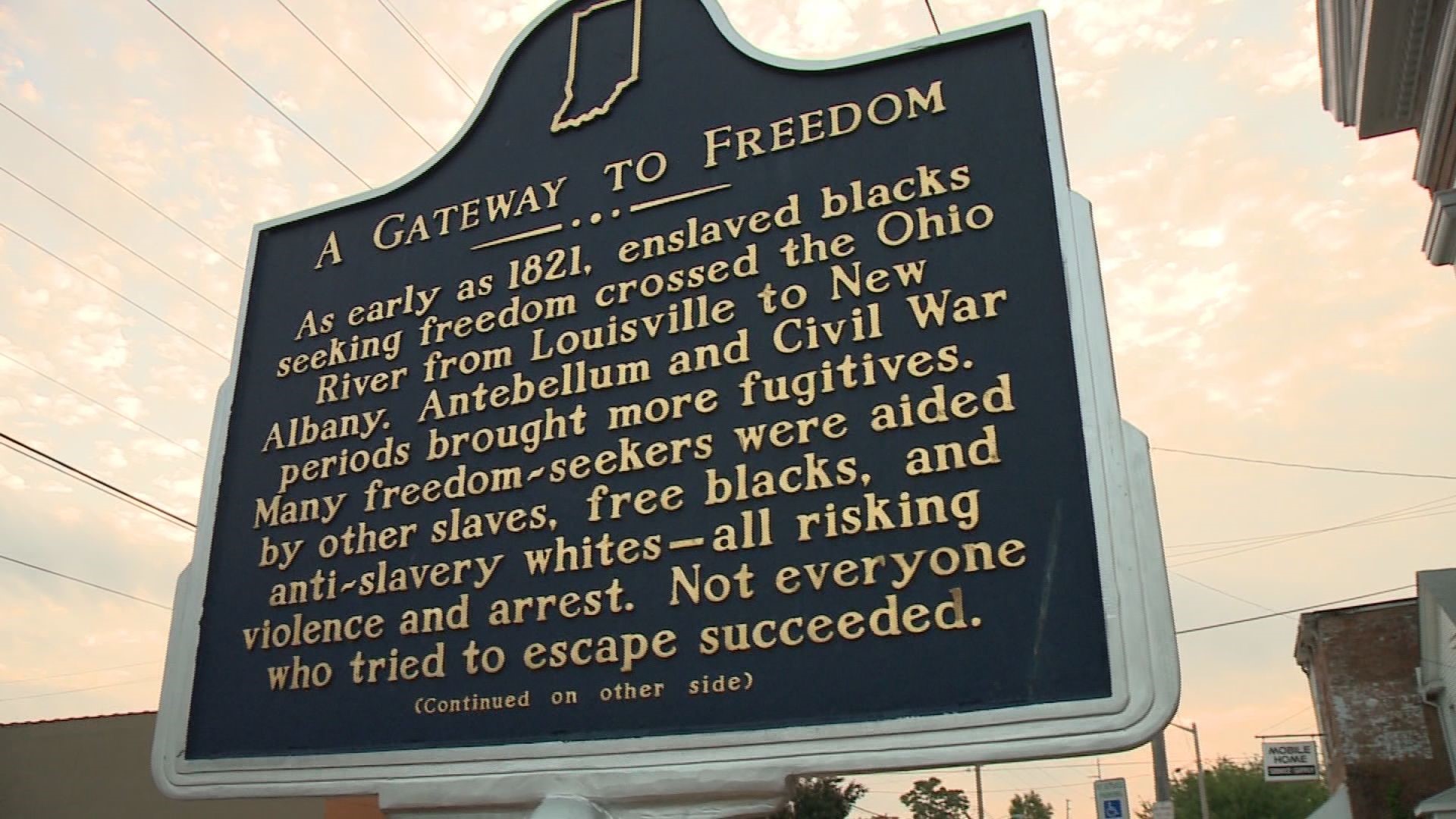'Freedom seekers': New Albany church once helped Kentucky slaves find freedom
A common misconception about the Underground Railroad is that there were literally tunnels underground, but for Second Baptist Church, that was actually true.

In a city as old as Louisville, history surrounds us. It's seen every day in the buildings, but often the story behind those walls gets lost to time. The same holds true in southern Indiana, where one church was once well-known for helping runaway slaves in their life-or-death struggle for freedom.
Second Baptist Church in New Albany opened in 1852, back then it was called Second Presbyterian Church – and is known locally today as the Town Clock Church.
It’s served multiple roles: a place of worship, a navigational point for 19th century steam ships – and a symbol of freedom for slaves.
“This would be one of the first sets of allies of a real story of allies of Black individuals who were helping the freedom seekers take refuge in this church from a hostile environment of slavery in Kentucky,” Chancea Roberts said.
Not a secret 'A lot of people frowned'
Roberts is a trustee of the church and, in a way, a gatekeeper of its history and guide to the past when he provides tours for elementary school children.
He said in the 1800s some members of the church were very outspoken in their disdain for slavery and frequently called for its abolishment.
By the mid-1800s, the church began to help slaves – most often from Louisville – in any way that could.
Word inevitably spread and it became the target destination for countless Kentucky slaves seeking the Underground Railroad.
"It was very, very open that it was going on here and a lot of people frowned about what was taking place here," Roberts said. "But [abolitionist members of the church] were very, very adamant about helping the freedom seekers."
One of those abolitionists was the pastor’s wife Lucy Bishop – a white woman who helped care for slaves after they made it to the church safely.
The New Albany Ledger printed stories about what was happening, but never mentioned names. Church leaders were too powerful and too well-liked to go that far.


Records of church meetings conveniently left out the names of those who were helping and what exact church business was going on.
Members who opposed helping slaves eventually split off and started a new place of worship, believing it was up to God to solve the slavery problem.
But for Black members of the church, it was much more personal.
The pastor's wife Lucy Bishop's 'missionary malevolent work'
Slaves in Kentucky weren’t going to wait for God to come and free them. Instead they risked their lives at night. Runaway slaves would swim, use skiffs or even wade across the Ohio River if it was low enough.
Getting across the river was only the start though.
Runaway slaves couldn’t just walk in through a front door. They had to use the cover of darkness to try and evade bounty hunters that were after them.
Oral stories passed down through the generations say slaves had to sneak in through very tiny spaces like old coal chutes.
Once across the river, slaves would wait – scared, tired, hungry, sometimes injured - until help arrived, often by Lucy Bishop.


Bounty hunters were a significant threat for a lot of people, not just runaways.
“The Fugitive Slave Act was taking place in 1850 which meant an individual African American moving around anywhere in New Albany had to show papers and they had bounty hunters here in New Albany,” Roberts said.
Even free African Americans in southern Indiana weren’t safe.
Bounties paid well for returned slaves and particularly nefarious hunters would take legitimate papers, tear them up, and return them to slavery.
Attempts were made to stop slaves from even getting across the river, too.
The Louisville-New Albany Railroad was a popular way to sneak into Indiana, but trains were watched very closely for any such attempts.
“James Brooks was a conductor of the railroad here and he would prevent the Louisville police from taking someone off the train if there was a freedom seeker,” Roberts said.
Tunnel under the street Members learn church's history
A common misconception about the Underground Railroad is that there were literally tunnels underground. However, for Second Baptist Church, that was actually true.
Tunnels ran from under the street between the church and the DePaul Hotel.
“Mr. DePaul was sympathetic toward the cause, and he allowed African American soldiers to take refuge in the building across the street,” Roberts said.
He said Lucy Bishop would travel back and forth between the two buildings doing "missionary malevolent work." She would bring medicine and supplies to help those seeking freedom.
The DePaul Hotel also served as a Civil War hospital. The Civil War provided another opportunity for slaves to find a way north.


After President Abraham Lincoln's Emancipation Proclamation freed slaves nationally and the decades passed, the story of the church’s work faded.
Second Baptist Church fell into disrepair, but most recently finished a years-long restoration in 2016. It now stands relic of a bygone era of human atrocities – but also hope.
For longtime members like Barbara Goode, it’s history is part of its appeal.
“When I came here in ’86, I didn’t know about the history of this church. Didn’t know it was Underground Railroad, none of that,” Goode said.


“Then after I got here, I started hearing a little, a little, and then you start getting interested," she said. "You hear how the people before us struggled to keep this church alive. We want to be an ‘all people’ church. Everybody’s welcome.”
Today, the church's membership is small, but the strive to keep the church’s legacy alive remains as strong as ever.
Make it easy to keep up-to-date with more stories like this. Download the WHAS11 News app now. For Apple or Android users.
Have a news tip? Email assign@whas11.com, visit our Facebook page or Twitter feed.


